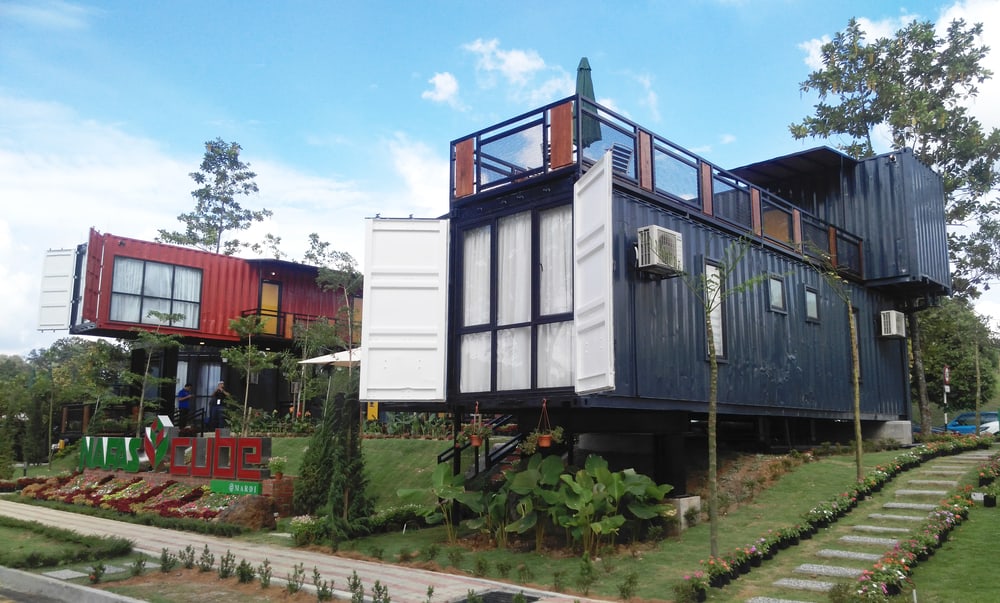
15 Ideas for Shipping Container Homes
In the world of innovative, sustainable living, there exists a fascinating intersection of form and function, where creativity thrives amid practicality. Enter the realm of shipping container homes, where the ordinary becomes extraordinary. These remarkable abodes redefine the way we think about housing, blending modern aesthetics with eco-conscious living.
Shipping container homes have swiftly evolved from an architectural novelty to a global phenomenon. What was once a simple vessel for transporting goods across oceans now serves as a symbol of sustainable housing solutions. These homes, born from the ashes of retired shipping containers, encapsulate the spirit of repurposing and recycling.
In this article, we embark on a journey through the world of shipping container homes, exploring their rise in popularity, architectural ingenuity, and environmental impact. Uncover the secrets behind transforming these steel giants into cozy sanctuaries, equipped with all the amenities you’d expect from a traditional home.
From sleek urban dwellings to serene countryside retreats, shipping container homes are changing the game for homeowners, architects, and environmentalists alike. Join us as we dive into this exciting world, where the boundaries of imagination and sustainability are continually pushed, one container at a time.
See more about - 26 Different Types Of Houses
Table of Contents
1. A Taste of Luxury in Shipping Container Homes
When you think of steel containers, luxury is probably the last thing on your mind. However, when you use several containers to create the ideal floor plan, you can have a luxurious piece of real estate on your hands. The key to elevating your shipping container house is the right piece of property, floor plan, and finishings.
Start by purchasing a desirable piece of property. This could be in the chicest part of downtown in your favorite city, on a mountain cliff, or beachside.
Whether you have two or 20, your next step is to create the ideal floor plan. Aim for high ceilings and open spaces. Focus on adding large windows and glass doors to take advantage of your gorgeous view.
The final step is to finish the build with high-end materials. All of the walls should have spray foam insulation and drywall. Then lay real hardwood flooring or marble tile. You could have granite or marble countertops. Choose custom fixtures for the lighting.
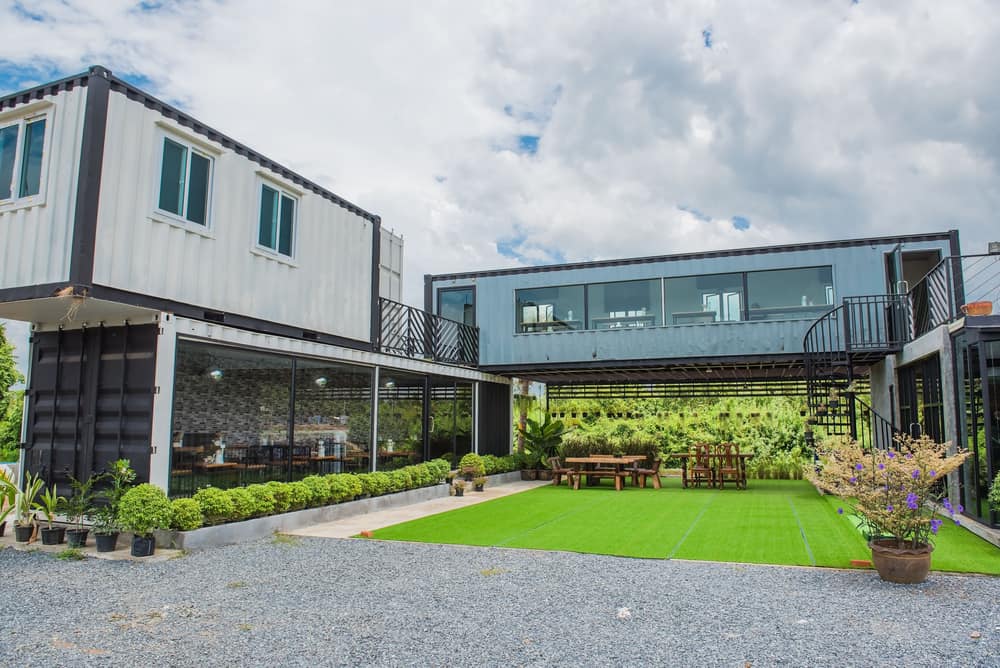
2. The Modern Marvel of Shipping Container Living
A modern container home is similar to any modern home built. Construction of this style of home just happens to be easier and faster with recycled shipping containers. The container is metal, and when you add that to your concrete foundation, you have the same materials and fundamental design of modern-style homes.
Enhance the modern look and brighten your container home by installing large windows. Be careful, though: too large or too many windows can decrease your container’s stability and strength. Work with a professional to size and place your windows safely.
Keep the straight rectangular lines and boxy shape of the containers. You can build off of them by creating a sleek metal covering that creates an outdoor living space.
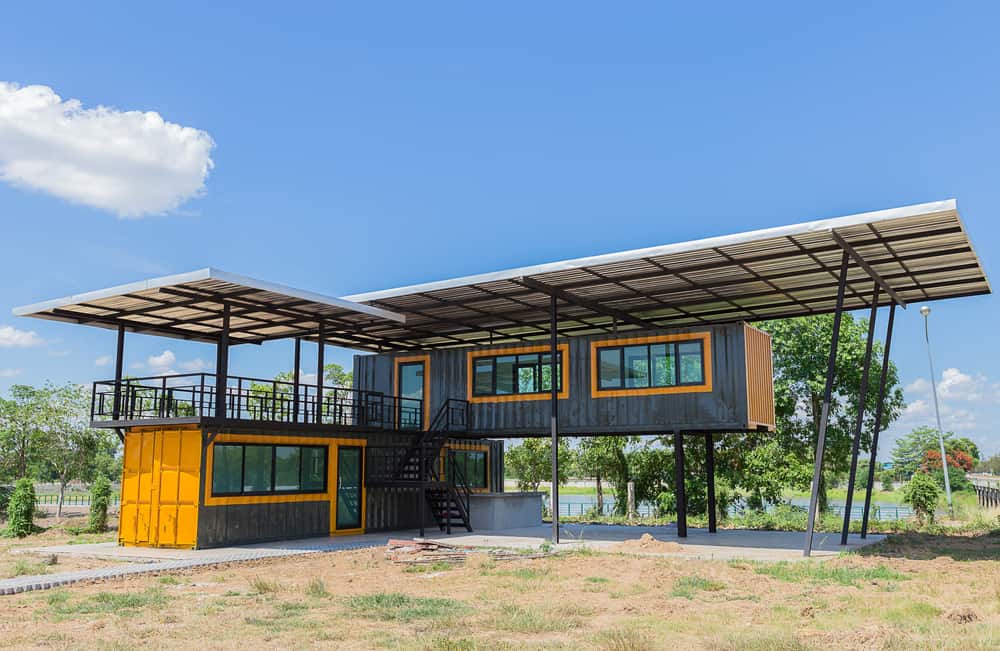
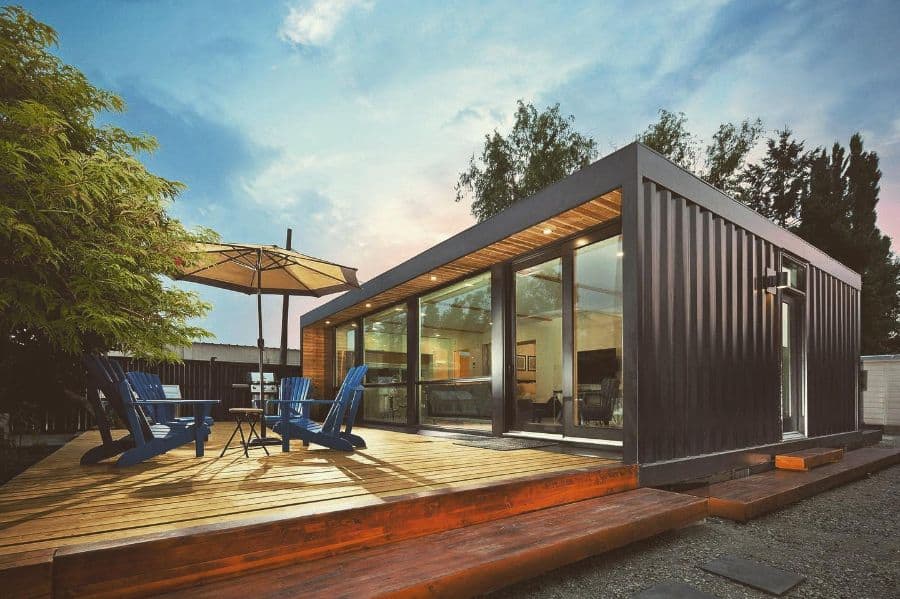
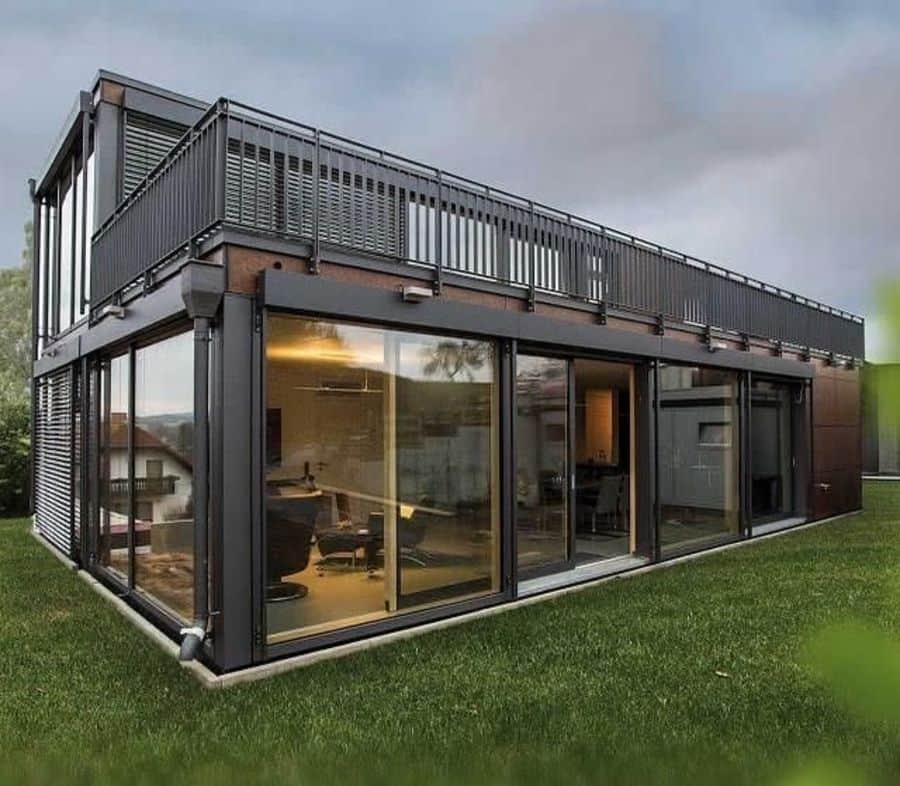
3. Two-Story Container Homes
There are two common ways people create a two-story home out of two shipping containers. They either stack one on top of the other facing the same way, or they turn the top one 90 degrees. Either way, you can create more living space or higher ceilings.
Before you plan anything, decide if you’ll have the ceiling and floor cut out of the portion of the containers to create a super-high ceiling. This can create a large living room downstairs. Then you can create a kitchen and bathroom in the rest of the ground floor container. Your bedroom will be upstairs in the second-floor box.
If you choose not to create a high ceiling, you have more space to create a master bedroom suite or a small office upstairs.
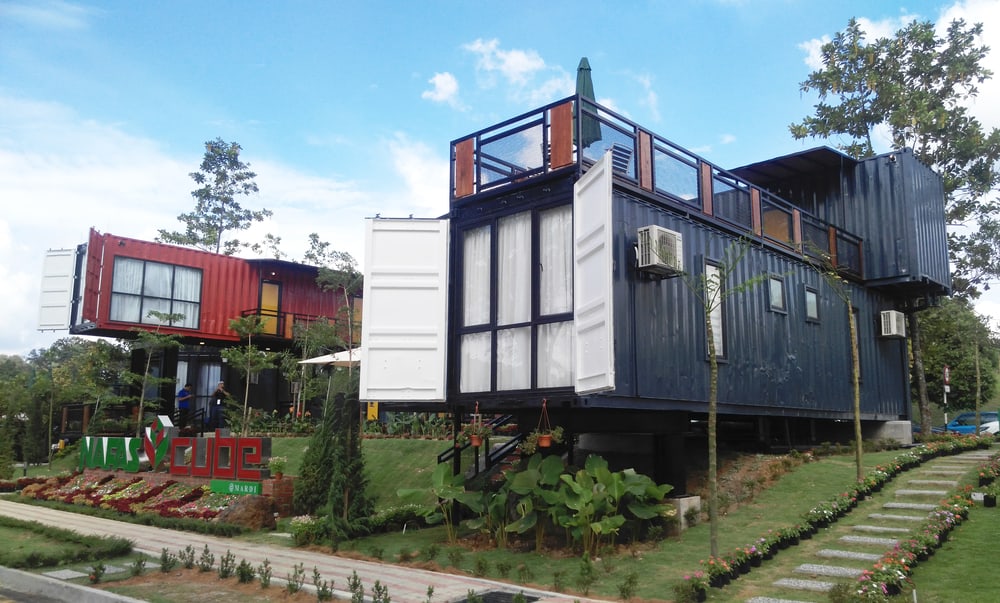


4. Embracing Minimalism With Tiny Dwellings
Many shipping container homes on the market today embrace the tiny home movement. These homes will use one or two containers to create a small living space. You can create this tiny home style by placing two containers next to each other at ground level or placing one on top of the other for a two-story house.
While your tiny home may seem exciting and innovative now, you’ll quickly realize there isn’t much space inside. This can feel confining and cramped. You’ll want to plan for this, so include features that will help the home feel larger.
Start by installing plenty of floor-to-ceiling windows and large glass doors. Remember that both sides of your container are load-bearing. If you compromise this integrity with lots of cutouts, you’ll need to support the container somewhere else to compensate.
Then build hidden storage into your tiny house. You could build the home on a platform and then install lift panels on the floor. Or build out one end of your container with a separate storage room.
Your final step is to create an outdoor living space. You can do this by building a deck to create an outdoor extension of your living room or kitchen. Or, install a staircase that gives you access to the roof. You could then build a rooftop patio with an outdoor kitchen and bar area.

5. The Charm of Single-Container Abodes
While many of the container homes that you see will use more than one container, this isn’t necessary. You can create a completely livable space inside one container. You can use all of the same tricks that you would use when building a tiny home. This includes installing plenty of windows, an outdoor area, and a rooftop patio. But you’ll want to go further because space is a premium and you need to plan your home’s layout carefully.
Plan to put your bedroom at one end. Then to simplify the plumbing and electrical, try to place the kitchen and a small bathroom next to each other. This will minimize the amount of plumbing pipe and electrical wiring that you need to run. These two areas could be in the middle of the container or on the opposite end of the bedroom. Then plan for a living area in the remaining space.
When building with a single container, your home is a maximum of eight feet wide. This could limit how you place your rooms. Be sure to check your local building codes as they may have minimum square footage sizes.
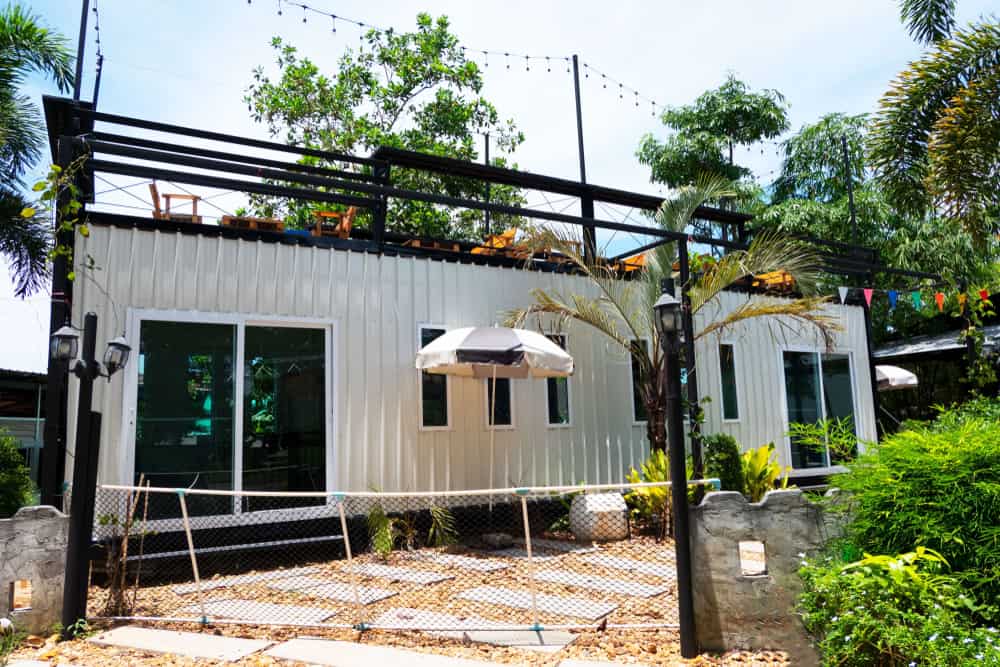
See more about - 61 Craftsman Style Homes
6. Creative Interiors for Shipping Container Residences
The first rule of decorating your container home is to scale everything to your available space. You need the square foot measurement of each room. Then you can create your interior design plan to fit.
Look for a smaller fridge for the kitchen, or a scaled-down vanity and sink for the bathroom. Don’t be afraid to accent the spaces with fun surprises. You could embrace the concrete floor and finish it with a stain and clear coat sealant.
As with any home, you should create outdoor living spaces that feel as comfortable as the interior does. Place couches, low tables, a rug, and lighting. Don’t forget to decorate the outside of your containers. You could paint a large mural or cover the metal with wood or stonework.
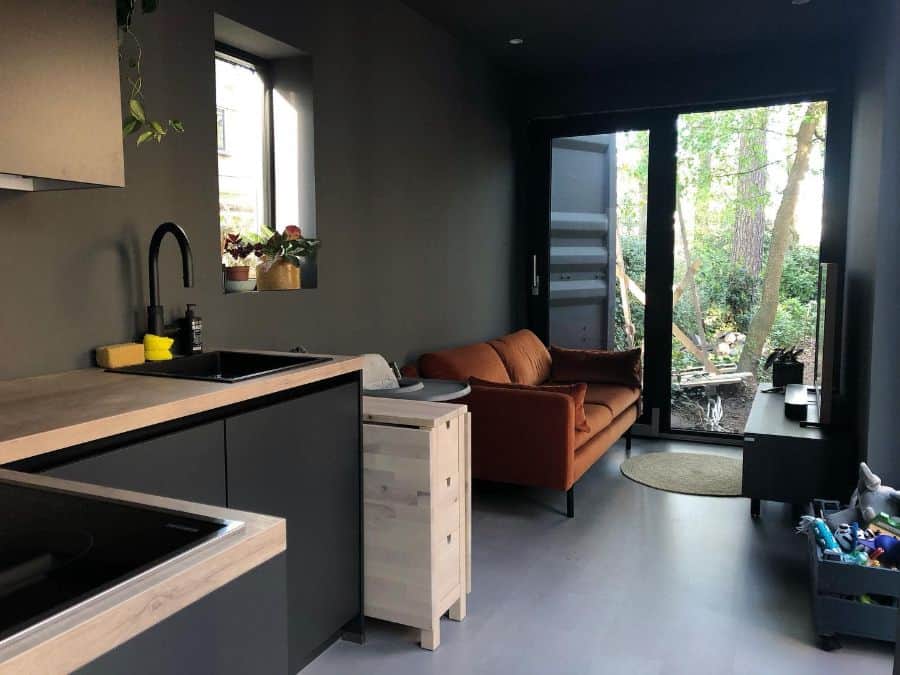
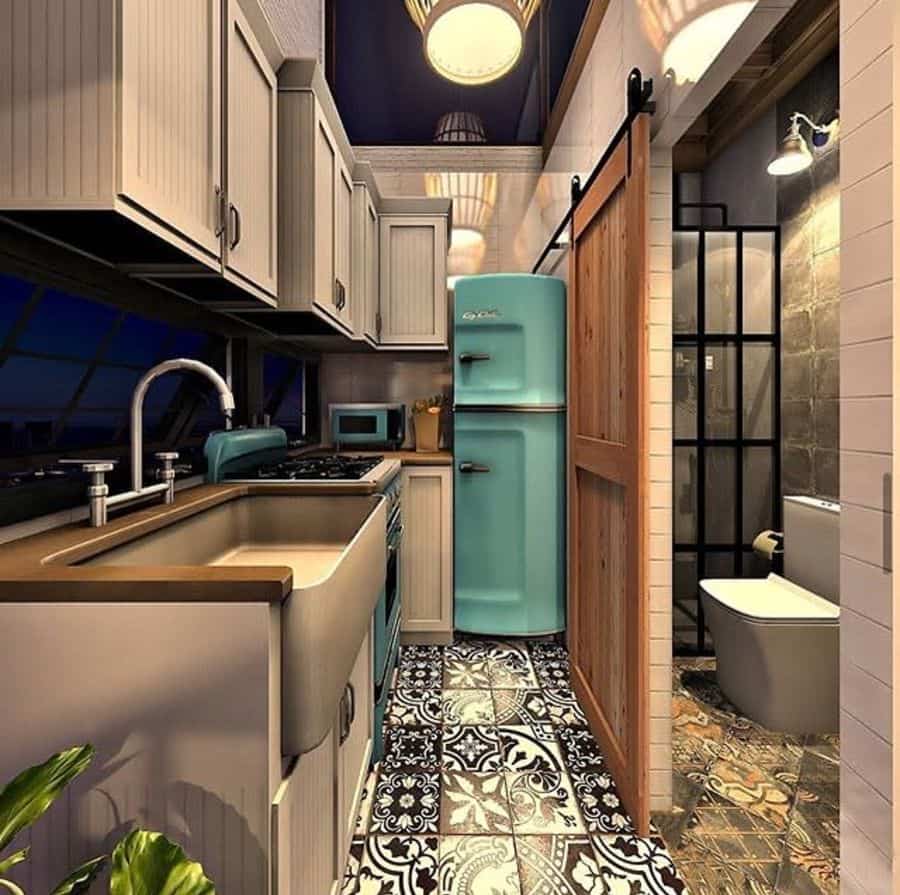
7. Unveiling the Elegance of Sloped Roof Container Homes
A sloped roof adds personality and interest to an otherwise very boxy home. It also serves two practical purposes. It prevents water and debris from gathering on the flat top of your container. It also allows you to position your home and roof to make the most of solar panels or skylights.
If you’re building a single container or tiny house, you can use supports to have an elevated sloped roof above your box. If you’re planning to build a larger home, consider using three containers. Place two containers parallel to each other with some space in between. Then place your third container on top of one of the two. Then build a sloped roof to connect the top of the second-story container with the top of the single container. This creates the perfect flat surface for plenty of skylights, but it also creates a large living space under the roof.

8. Multi-Family Container Living
Container houses aren’t just for the wealthy or environmentally conscious. Many commercial builders are creating multi-family homes out of them. Often referred to as container cities, these communities will use many containers to create either apartment-style buildings or independent cottages. Each resident has their own independent housing made of one or two containers.
Some of these communities are more urban and upscale. The containers will feature high ceilings, upscale materials, and plenty of large picture windows. Other communities address the affordable housing shortage. These single containers look like a standard suburban neighborhood. Each container has its own front porch.
If you decide to build a home to house more than your immediate family, then plan to use a lot of containers. At the bare minimum, you could create a three-bedroom home out of three containers. But keep in mind, the entire size of the home would be about 500 square feet. So to have a 1,000-square-foot home, you’re going to need about six containers.
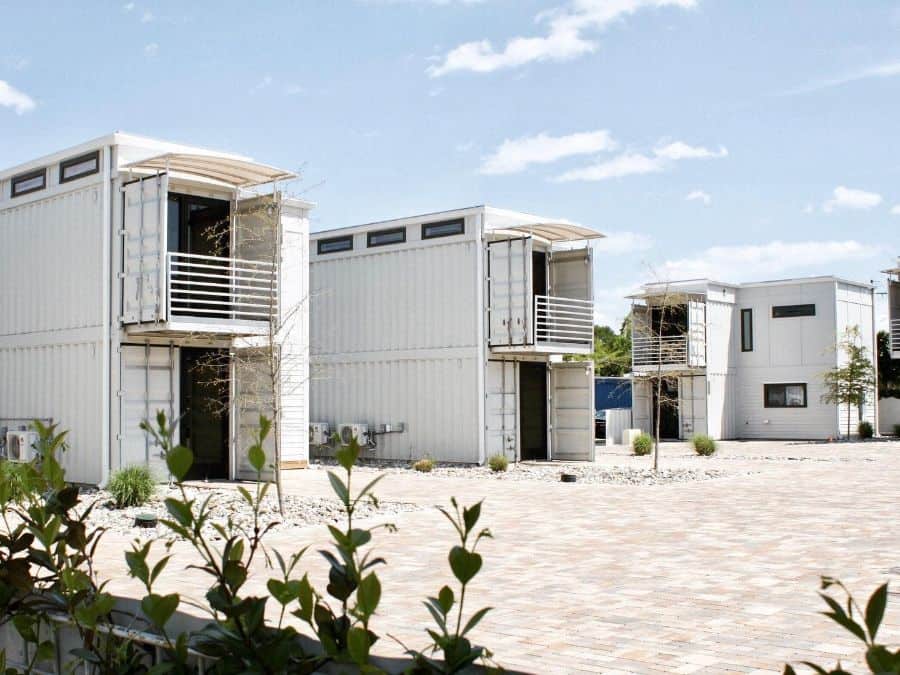
9. Welcoming Guests in Style
Wouldn’t it be nice if you could have a separate space for your guests instead of having them crash on your couch or invade your bathroom? You could give them a guest house where they could retreat to. Building an entire guest house would be expensive and take up a lot of room. Instead, you can create the same experience with a single shipping container.
With one used shipping container, you can have a bedroom, bathroom, closet, and even a mini kitchen area. This gives your guests plenty of space to sleep, shower, and even make their morning coffee. Complete the look with a large outdoor patio or deck area. Then you could venture out and meet them outside for a morning cup of joe or maybe an evening cocktail.
To make the space feel larger, consider installing a large glass door or two. Then your guests could open up the entire container and bring the inside out or the outside in.
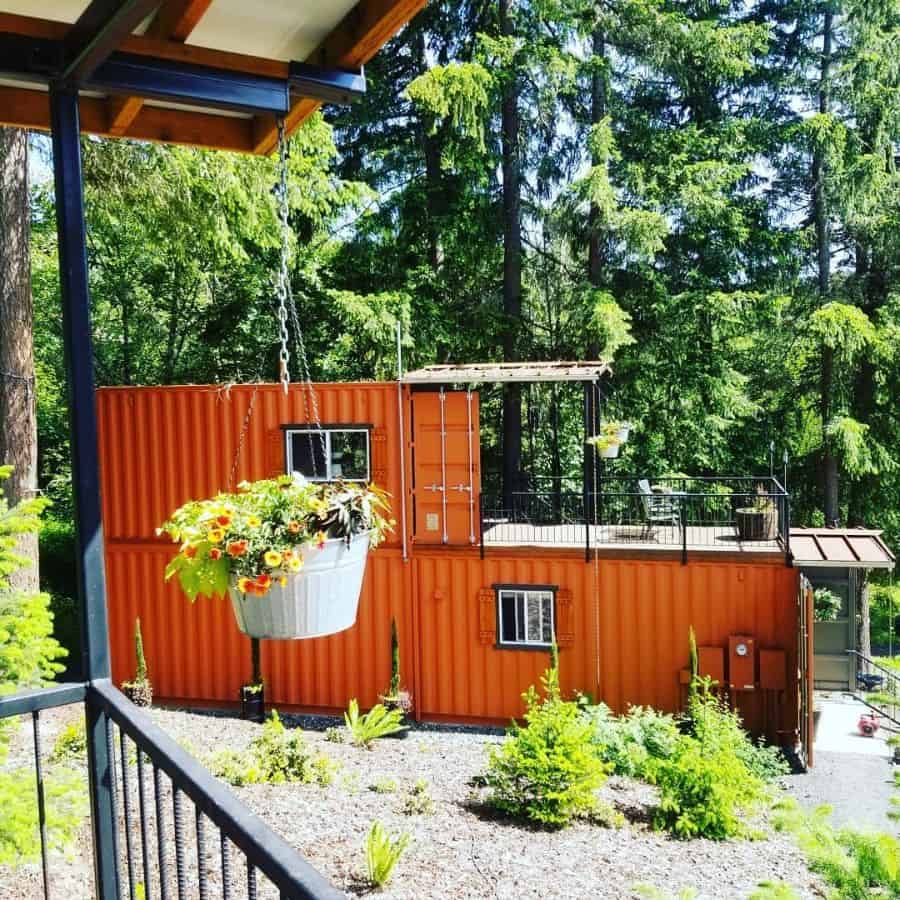
10. Sustainable Container Housing
If you desire to build a container home from your love for the environment, you’ll want to do more than just build with recycled containers. Consider making the entire home green by adding additional features to create a sustainable living environment.
Start with your electricity and mount large solar panels on your sloped roof. This will capture the sun’s energy and convert it to power to run your home. Then place rain barrels around the home to gather and collect water. You could even mount a canvas panel to provide covering and shade while also collecting condensation.
Another option is to turn the top of your container home into a green roof. Hang a shipping pallet that you can then use as an herb planter. Build planter boxes to line the top of your container. Then you can head up there to garden and harvest fresh produce.

See more about - 76 Ranch-Style House Ideas
Shipping Container Home FAQs
What are shipping container homes and why are they gaining popularity?
Shipping container homes are residential structures made by converting steel shipping containers, typically 20 or 40 feet long, into livable spaces. They have gained popularity due to their sustainability, affordability, and versatility. These homes repurpose decommissioned containers, reducing waste and making efficient use of available resources. Additionally, their modular design allows for various architectural styles and configurations, making them an attractive option for those seeking unique, eco-friendly housing solutions.
What are the cost considerations for building a shipping container home?
The cost of a shipping container home can vary widely depending on factors such as location, size, design complexity, and the level of customization. On average, a basic container home may cost less than a conventional house, but expenses can add up when considering insulation, plumbing, electrical work, and interior finishes. It’s essential to budget for these additional costs and work with experienced professionals to avoid unexpected expenses.
Are shipping container homes energy-efficient?
Yes, shipping container homes can be highly energy-efficient when properly designed and insulated. Adequate insulation, ventilation, and energy-efficient fixtures can make them as energy-efficient as traditional homes. Additionally, the compact size of shipping containers can lead to reduced energy consumption for heating and cooling. Some container homes also incorporate solar panels and other sustainable technologies to further enhance energy efficiency.



